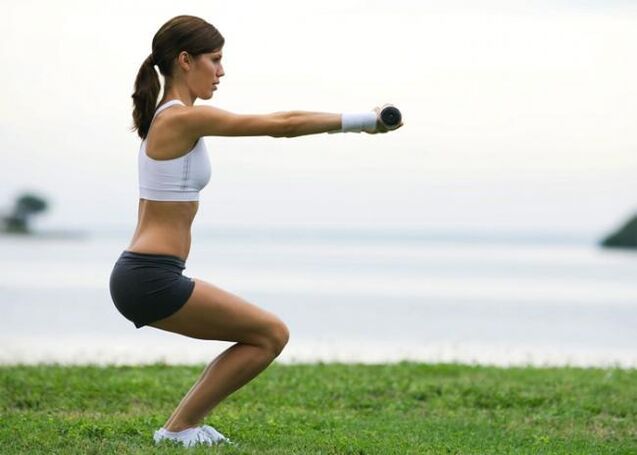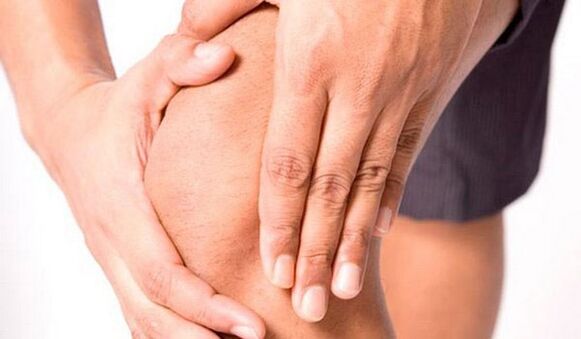The joints of a person's lower extremities are responsible for the free and active movement of the body in space. Therefore, the appearance of even small problems in the legs leads to a significant loss of mobility.
More than half of all joint diseases occur in the knee as one of the largest articular joints that can withstand the load of the entire human body.
The main causes of knee pain
All diseases of the knee can be divided into several groups, depending on the predominant mechanism of joint injury:
- Inflammatory processes in the joint (arthritis) and periarticular sac (bursitis). With arthritis, the knee joints grow in size and become brittle when bent. General well-being deteriorates, body temperature rises. Bursitis is characterized by the presence of a round protrusion in the joint area where fluid accumulates. The cause of inflammatory diseases is the penetration of the infection into the joint (through wounds, cuts, internal foci of infection).
- Degenerative lesions of the joint - osteoarthritis. In this case, there is a gradual destruction of the internal articular surfaces for a long time, excessive growth of bone tissue. As the load on the knee continues to exist, there is no time for the destroyed joint to recover, and it collapses further. Osteoarthritis is characterized by initial pain, ie. In the morning or after a long rest, the knees ache during bending and walking. The pain disappears after squatting or other stresses in the joint. Patients with osteoarthritis of the knee joints in the advanced stages report difficulty in climbing and descending stairs, and even the appearance of pain at rest.
- Traumatic consequences - intraarticular fractures, bruises, dislocations and sprains. For any type of joint injury, it is advisable to contact a specialist who will decide what to do - immobilize the joint or, conversely, give it a functional load.
Causes of knee pain in pregnant women
Knee pain during pregnancy is explained by a sharp increase in the load on the joints of the lower extremities due to weight gain due to the uterus, fetus and amniotic fluid. In addition, during the last trimester, many people experience abnormal fluid retention (edema) and weight gain, which puts excessive pressure on the legs and makes it difficult for the knee joints to function normally.
In the last weeks of pregnancy and during childbirth, there is a strong production of relaxin, which softens the articular ligaments. Relaxants stretch the ligaments of the pelvic joints in the first place, but other joints, including the knee, can also be affected.
In all these conditions, pregnant women have pain in the knee joints, even at rest and at night. Within a few weeks after giving birth, a woman's body leaves excess water, the production of relaxants stops, weight is lost, so the discomfort in the knees disappears.
Causes of pain during exercise
When running and playing sports "on foot" (volleyball, tennis, football), the knee joint experiences more stress than walking. For normal operation, there is not enough time for the fluid produced in the joint to form, and therefore the friction of the articular surfaces increases.

In the case of past knee injuries, joint degeneration can progress rapidly under the influence of exercise. If you have pain in the knee joint after exercise (especially after running or jumping), it does not mean that you should give up exercise completely. You just need to reconsider the options for loading the knees and replace the exercise or training set with something softer for the legs.
Causes of knee pain in children
The most common cause of knee pain in a child is an injury caused by excessive physical activity. Bruises can be suspected by the appearance of the knee - there are bruises and abrasions on the skin, there is swelling on the side of the blow.
If a child complains of knee pain, infectious arthritis, which usually occurs shortly after the exacerbation of another bacterial (tonsillitis, otitis media, bronchitis) or viral infection, should be ruled out. With such arthritis appears red, swollen, the child's general condition worsens - body temperature rises, lethargy, drowsiness appear.
Another cause of knee pain in children may be autoimmune arthritis (rheumatoid arthritis). In this case, in addition to the knees, the child will be involved in the inflammatory process and the elbows, as well as small joints of the fingers. This type of arthritis is characterized by a "brief" lesion - in a short time the inflammation passes from one joint to another.
Treatment and prevention of knee pain
The treatment of the knee joint should be determined by a specialist who will learn why the knee hurts after the examination and how to treat it. Treatment of pain in the knee joints aims to reduce inflammation and degenerative processes. It is recommended for all patients with knee pathology:
- limit the physical load on the joint (including refusing to carry weights, climbing stairs); Women are advised not to wear heels, as the pressure on the joints increases due to improper distribution of body weight. In some cases (complex dislocations) complete immobilization of the knee with the help of a tire or cast is required;
- Take a course of chondroprotectors - drugs that contain substances necessary for the structure of the joints (chondroitin sulfate and glucosamine). Chondroprotectors are prescribed for oral use both in tablet form and as part of ointments and gels. It is also possible to inject these substances directly into the knee joint in the hospital;
- use painkillers, anti-inflammatory (corticosteroid hormones and non-steroidal drugs) and antibacterial agents;
- outside the exacerbation stage, undergo a course of physiotherapeutic procedures (mud applications, ultrasound and electrophoresis treatment);
- load the affected joint properly - with the help of therapeutic exercises. One of the best such exercises is "cycling" - in the supine position, imitate the movement of the pedals of the bike.
- Surgical knee arthroplasty is preferred in highly developed degenerative processes in the joint.

Treatment of joints with folk remedies
In addition to traditional methods of treating knee pain, folk remedies to relieve inflammation are also effective in many cases:
Lotions with ammonia-camphor solution
Mix half a glass of ammonia (10% solution) with 10 g of camphor alcohol, add 1 liter of salt water (for this you need 1 tablespoon of salt per liter), shake until the sediment disappears. Heat the solution in a water bath to a warm temperature, moisten the gauze inside and apply to the sore knee. Top with polyethylene. Keep 2-3 times a day for half an hour.
Cabbage leaf compress
Beat fresh cabbage leaves with a fork, sprinkle lightly with salt to open the cabbage juice. Apply to knees for a few hours, secure with a bandage. Another option for this compress is to apply a thin layer of honey to a cabbage leaf, otherwise the procedure is the same.
Cinquefoil tincture
100 g of dry stems insist 3 weeks for 1 liter of vodka. Take 1 tablespoon half an hour before meals. l. , Diluted in 50 ml of water. Tincture can be rubbed into the painful knee or turned into lotions.
Ointment from beeswax
A piece of wax the size of a matchbox, yolks and honey (1 tablespoon L) Mix everything in a water bath, apply overnight with a swab to the painful joint.
Folk remedies, as well as therapeutic exercises should be agreed with the attending physician, because ignorance can easily harm a person (for example, when using bee products externally in a patient with allergic diseases or trying to develop a dislocated joint). with physical exercises).
Prevention of diseases of the knee joints is aimed at preventing infection (timely treatment of chronic inflammatory foci), reducing the load (fighting excess weight, wearing fixation bandages) and strengthening the joints and bones (gymnastics, swimming, cycling, drinking, eating rich foods).
Remember that good and timely treatment of the knees, as well as the prevention of recurrence of injuries and joint diseases will allow you to maintain active mobility for many years.






















